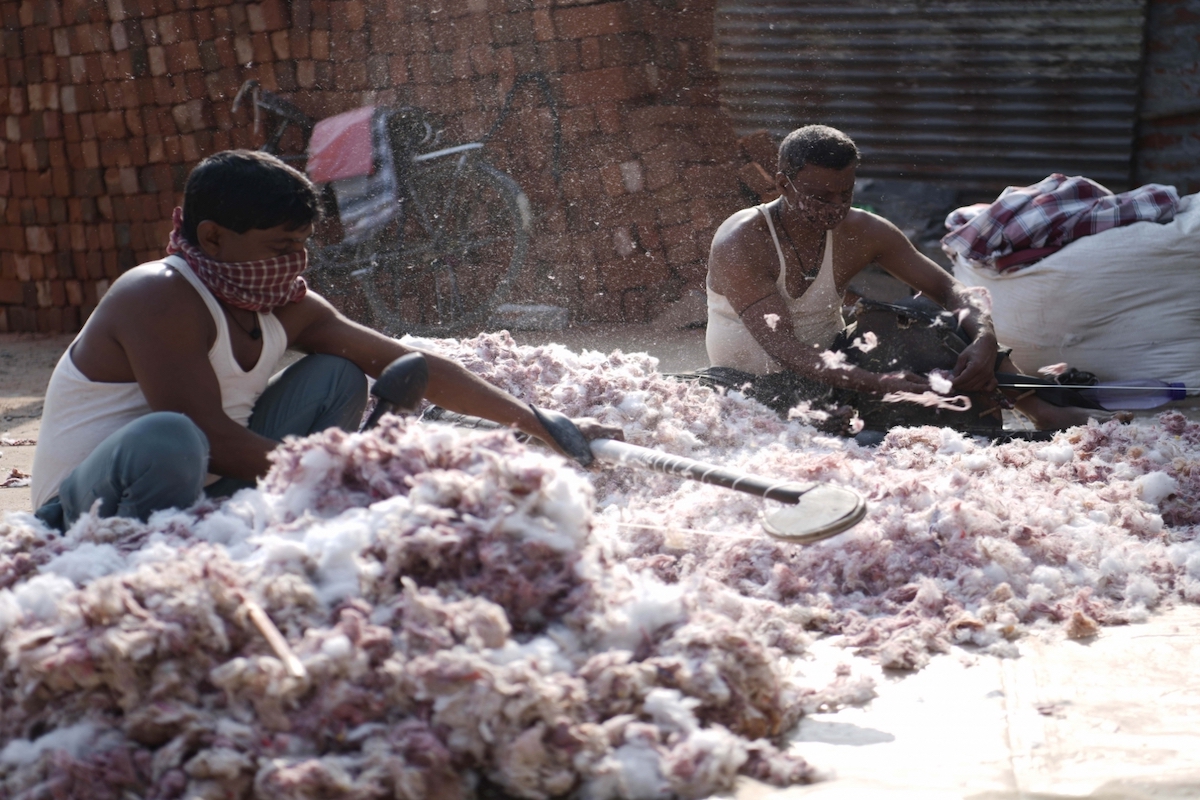Bangladesh portraying India negatively, New Delhi tells Dhaka
The Bangladesh envoy was told that the comments attributed to Bangladesh former Prime Minister Sheikh Hasina have been made in her individual capacity in which India has no role to play.
There is no doubt that the development of the garments sector is desirable for everyone in the country, including the workers because it involves the question of the livelihood of four million of them.

(Photo: IANS/Abhishek Saha)
This year’s May Day, now in its 136th year, follows the golden jubilee of Bangladesh’s independence. Since our independence, the success of Bangladesh’s garments sector has featured repeatedly and prominently in national and international forums. Since the beginning of the year, various reports have lauded the significant increase in export earnings and the industry turning around post-Covid. During the first six months of the fiscal year 2021-22, readymade garments from Bangladesh were worth USD 19.9 billion. These success stories are based on data from the Export Development Bureau (EPB). There is no doubt that the development of the garments sector is desirable for everyone in the country, including the workers because it involves the question of the livelihood of four million of them. But there is no telling how much its impact has reached the lives of the country’s RMG workers. Therefore, as a labour activist, I feel it is important to explore the “success” of the garments sector in light of the struggles and conditions of the workers on May Day. Some call the current boost in the garment sector’s export a miracle, some call it a big leap, and some say that the wind is blowing in this sector ~ at least that is how the sector is being praised by the government’s ministerial figures, the
BGMEA leadership and the media. In 1971, Bangladesh was called a “bottomless basket” by US Ambassador U Alexis Johnson and Secretary of State Henry Kissinger. At present, the current BGMEA president is marking this particular period of export growth as a “basket full of wonders”. The question that comes to mind is: for whom is this “basket full of wonders,” the owners, the government or the workers? Unfortunately, we don’t see the inclusion of workers in these success stories, whose quality of life as “cheap labourers”, earning a meagre Tk 8,000, remains the same as before, if not worse. The worker, whose labour is helping the economy to flourish, is unable to survive with his/her family given the current market conditions, where the prices of essentials have long spiralled out of control.
Advertisement
However, whenever the workers’ organisations demand an increase in wages ~ to Tk 20,000 in light of the current inflation ~ the owners are enraged. They want to ignore this demand and downplay their own profits, citing a rise in prices of raw materials and other commodities. There are always such arguments in store. Around 3,00,000 workers lost their jobs during the Covid-19 pandemic; many factories were closed down, orders worth USD 3 billion were cancelled, and tens of thousands of workers were denied their full wages and benefits. The situation was somewhat resolved when a large portion of the orders returned. Many workers who lost their jobs also got back to work. But their incomes in their new jobs decreased, and many, desperate for an income, were forced to take up entry-level jobs. When government officials and private sector employees were working from the safety of their homes during the pandemic, it was the garment workers who risked their lives to, apparently, “keep the economy floating”. Ensuring social distance or safety was just a luxury. Although RMG export orders bounced back once the corona situation improved, the workers’ lives did not improve. The working hours in the factories increased, as did the production pressure. An amendment to the labour law now allows four hours of overtime instead of two. One-hundred-thirty-six years ago, workers in Chicago, USA, fought to demand an eight-hour workday.
Advertisement
Advertisement